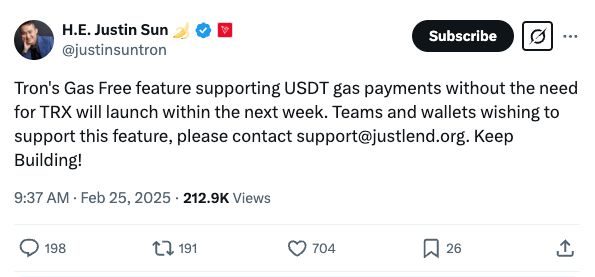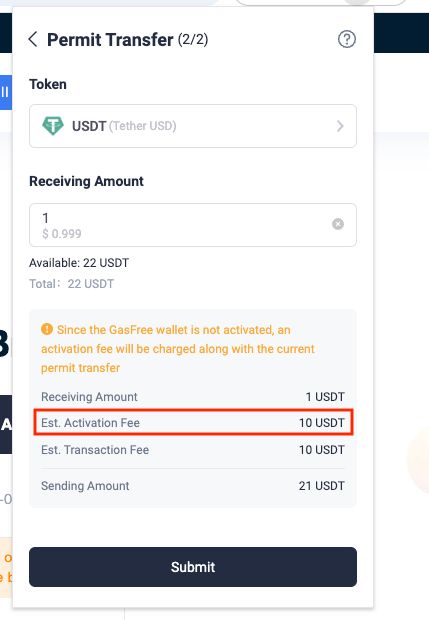On February 25th, Justin Sun, the founder of TRON, introduced an innovative feature known as “Gas Free.” This new functionality aims to streamline the process of transferring USDT on the TRON network without the need for TRX tokens to cover transaction fees.

However, initial testing with the Gas Free feature using the TronLink wallet revealed that it incurs significantly higher costs than a standard USDT transfer that utilizes TRX for transaction fees.
Understanding the Costs Associated with “Gas Free” Transfers
New Receiving Address Requirement: Users activating the Gas Free feature are assigned a new TRON receiving address for their incoming USDT transactions. This could pose a challenge for users used to their established addresses, leading to potential confusion and inconvenience.
One-Time Activation Fee: When first utilizing the new address, users are required to incur a one-time “Activation Fee.” This fee is set at 10 USDT, adding an upfront cost to the transaction process.

Per-Transfer Transaction Fee: Beyond the activation fee, each transfer incurs a “Transaction Fee” of an additional 10 USDT. Initially believed to decrease after the first transaction, the fee remained unchanged at 10 USDT for subsequent transfers.

Cost Comparison with Standard TRX Fee Transactions
For perspective, a traditional USDT transfer utilizing TRX as the transaction fee amounts to approximately 13.84 TRX, equating to around $3.26. This figure is substantially lower than the total expenses incurred when using the Gas Free feature.
Final Thoughts
Despite its appealing name, the TRON Gas Free feature appears to be counterproductive in terms of cost-effectiveness. The steep activation and transaction fees render it a more expensive option when compared to standard TRX-based transaction solutions. Users are encouraged to meticulously evaluate these financial implications before choosing to leverage this new feature.











